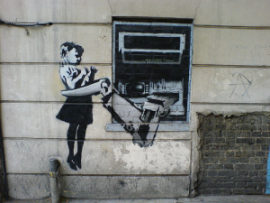By Numerian

"The Federal Reserve is doing whatever it can – and some of this is against their charter – to revive the failed system of TBTF banks, securitization, and debt binges which will inevitably lead to another massive bubble, leaving the public on the hook for future bailouts." Numerian
Joe Nocera, financial columnist for The New York Times, had an interesting conclusion to his recent article on Bank of America:
I admit it: I want to see the banks feel some pain. Most people do, I think. Banks did terrible things during the subprime bubble, and they still haven’t paid any real price. I find myself rooting for judges to rule against banks in foreclosure cases. I would love to see these big investors put the serious hurt on Bank of America, which will encourage other investors to pile on. I know this colors my thinking. I can’t help it.
Yet I also know the flip side. If the foreclosure lawyers start winning a lot of cases, if judges halt foreclosures on a widespread basis, if investors start to extract billions upon billions of dollars from the banks — and if banks become seriously weakened as a result — we’ll be right back where we were two years ago. The banks will need to be saved for the good of the economy. The taxpayers will have to come to the rescue. That’s an appalling prospect too.
Banks: We can’t live with them, and we can’t live without them. It stinks, doesn’t it?
This brief flourish of disgust for the banking industry received a lot of attention, almost all of it favorable. Millions of Americans want to see “serious hurt” put upon the banks, especially the big banks that are in the Too Big To Fail category. Why do we hate the banks so?
Recent comments